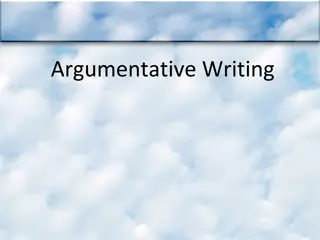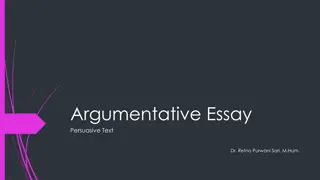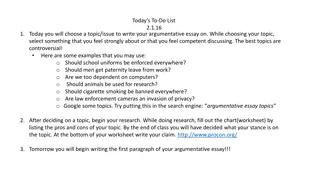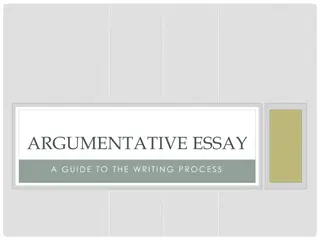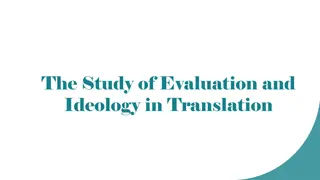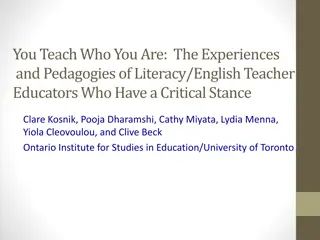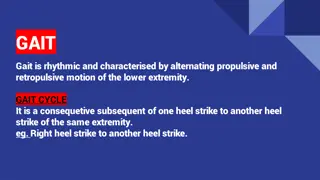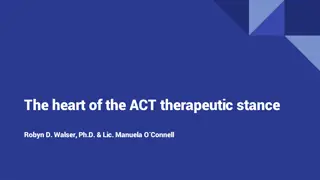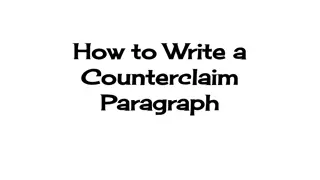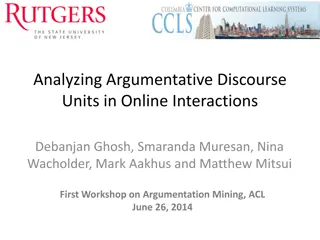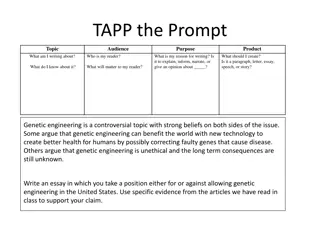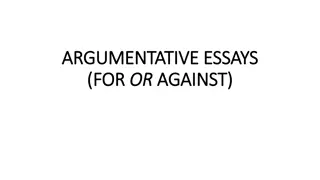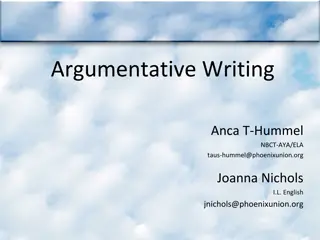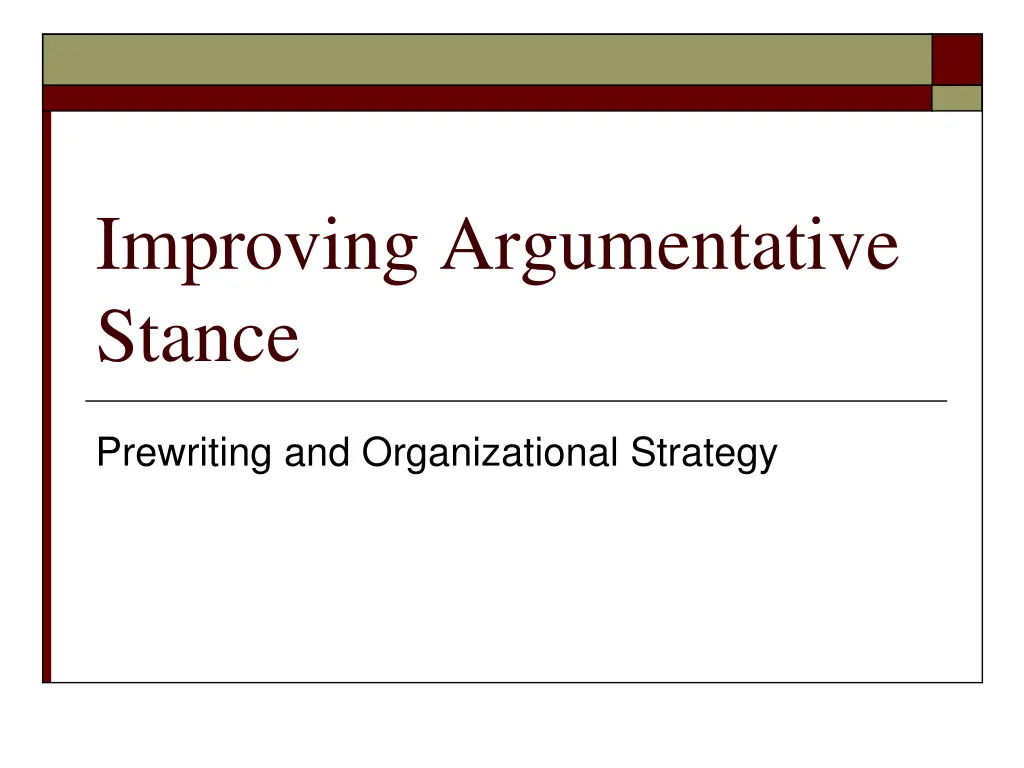
Effective Strategies for Academic Argument Development
Enhance your argumentative writing skills with these prewriting and organizational strategies. Explore the definition of academic arguments, dos and don'ts, constructing arguments, and transitioning from knowing to thinking in an academic setting. Master the art of presenting informed reasoned arguments effectively.
Download Presentation

Please find below an Image/Link to download the presentation.
The content on the website is provided AS IS for your information and personal use only. It may not be sold, licensed, or shared on other websites without obtaining consent from the author. If you encounter any issues during the download, it is possible that the publisher has removed the file from their server.
You are allowed to download the files provided on this website for personal or commercial use, subject to the condition that they are used lawfully. All files are the property of their respective owners.
The content on the website is provided AS IS for your information and personal use only. It may not be sold, licensed, or shared on other websites without obtaining consent from the author.
E N D
Presentation Transcript
Improving Argumentative Stance Prewriting and Organizational Strategy
What is an academic argument? A means of discovering truth, negotiating differences, and solving problems An intellectual effort that is intended to solve a problem by drawing people together
Dos and do nots of academic argument Do look beyond surface and personal needs/ desires Do NOT communicate personal associations or reactions to a controversy
Academic Argumentative Writing Definition: writing that attempts to prove the validity of a point of view or an idea by presenting informed reasoned arguments. Informed reasoned argument: what you KNOW and what you THINK Academic argumentative writing engages others through language; it does not seek to win.
Constructing an argument What do I know? What are the key points your research brings out? What are the answers to the five W s + how? Do any cultural or historical influences pertain? Which points are most important? Which are least? Why do I think this? What do I know that will help my reader understand my topic in a new way (vs. merely repeating source material)? What don t I know that I need to include?
Moving from knowing to thinking Summarize what you know from each source Evaluate what you read What in my source material makes we evaluate it the way I do? What is not in my source material that makes me evaluate it the way I do? Is that clouding my reasoning?
Moving from knowing to thinking Analyze the parts that make up your topic Break the whole into relative components How do they relate to one another? Allows you to see the topic differently and discover what you might say Synthesize the ideas or parts Bring ideas together to make connections Consider whether disparate ideas actually do or can connect in some logical, reasonable way
Choose a stance Reflect on what your source materials brought together will support Choose a stance for which you have confidence in your defense Choose a stance you can argue sincerely Not taking a stance = Boring paper
Argumentative Strategy/Structure Classical (Aristotle) Introduction: warms up the audience, establishes goodwill and rapport with the readers, and communicates the thesis Narration: summarizes relevant background material, provides any information the audience needs to know about the environment and circumstances that produce the argument, and sets up the stakes what s at risk in this question
Classical Argument (Contd.) Proposition: presents the general argument you will be making and the lines the argument you will follow. Confirmation: presents and argues your points/claims in a logical order (usually strongest to weakest or most obvious to most subtle) providing evidence for each claim (provides a chain of reasoning)
Classical Argument (Contd.) Refutation and concession: looks at opposing viewpoints to the writer s claims, anticipates objections from the audience, and allows as much of the opposing viewpoints as possible without weakening the thesis Summation: provides a strong conclusion, amplifying the force of the argument, and showing the readers that this solution or viewpoint is the best for meeting the circumstances Reminds the reader what s at stake and the importance of the situation Provides sense of closure vs. breaking off
Variations on Classical Argument: Logical Order Climactic order Introduce controversy ending with a thesis Build from least powerful to most powerful argument Rank sub-points in order from least to most powerful also Based on the principle of primacy/recency
Two sides of the controversy Introduce controversy ending with thesis Present opposing view Present your point of view Show and connect evidence to support why your view is better
Present and respond to counter arguments Introduce controversy ending with a thesis Present main counter argument Show its flaws Present your argument Show its strengths A variation of the above is to concede the merits of the counter argument then show the greater merits of your argument
Concession (Rogerian Argument) Introduction that leads to thesis Summarize opposing points acknowledging their merit Transition paragraph that winds down to your position (On the other hand. . . ); never say the other side is wrong or that yours is better Support your position Conclude
Other logical strategies Problem/solution Introduce Define problem Give some background Provide solution Compare and contrast Consider similarities and differences among various sources Two organizational patterns
Compare and Contrast By source or subject Introduce controversy Summarize each source or subject Discuss both the obvious and the more subtle similarities or differences Compare and contrast main features of each Be sure that all discussion supports the thesis Works best if summaries can be brief
Compare and Contrast By criteria (more complex) Introduce controversy Compare or contrast several authors simultaneously Examine their views and discuss the comparisons or the contrasts at the same time Works best if multiple points are being discussed or if passages are long and complex



